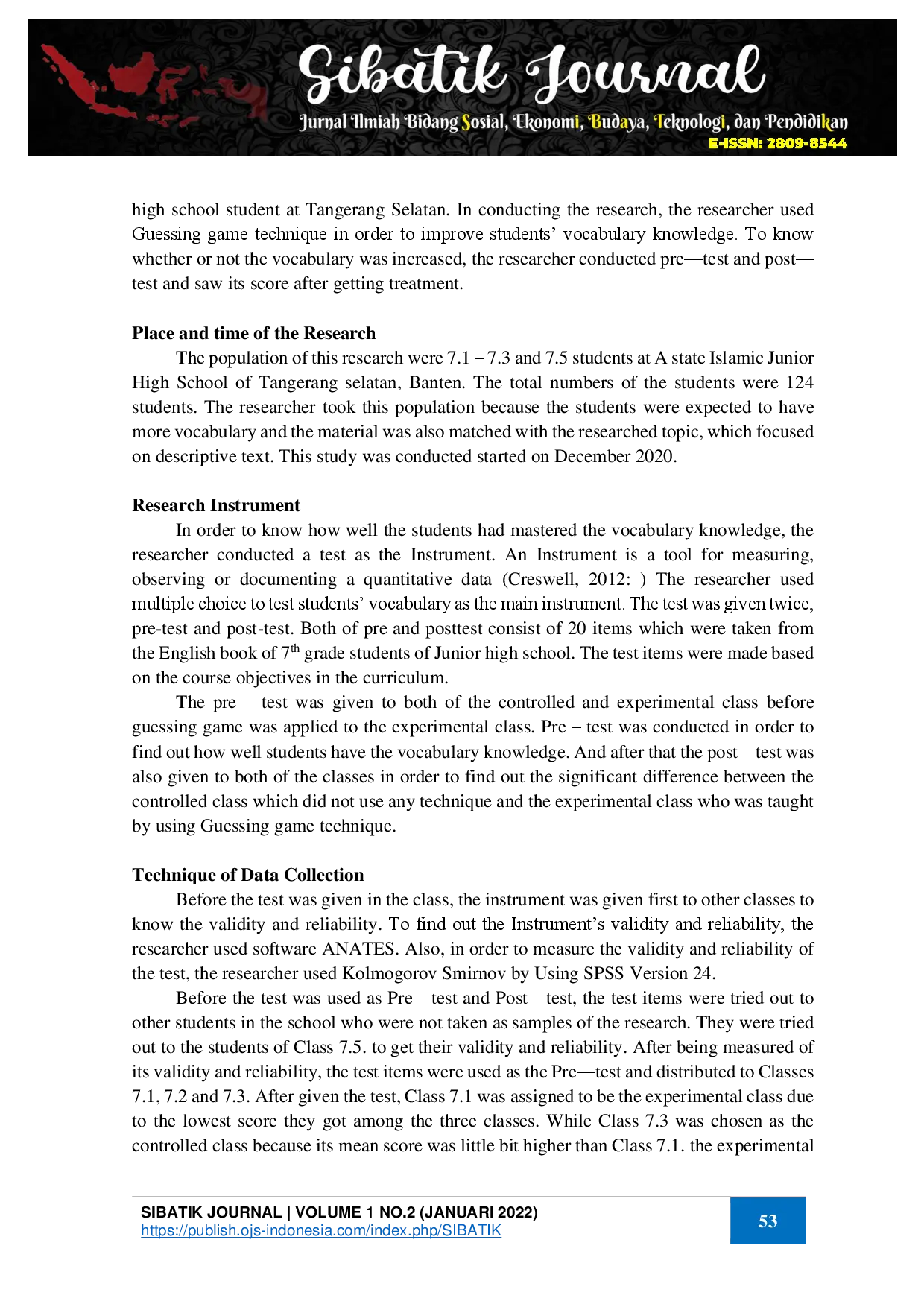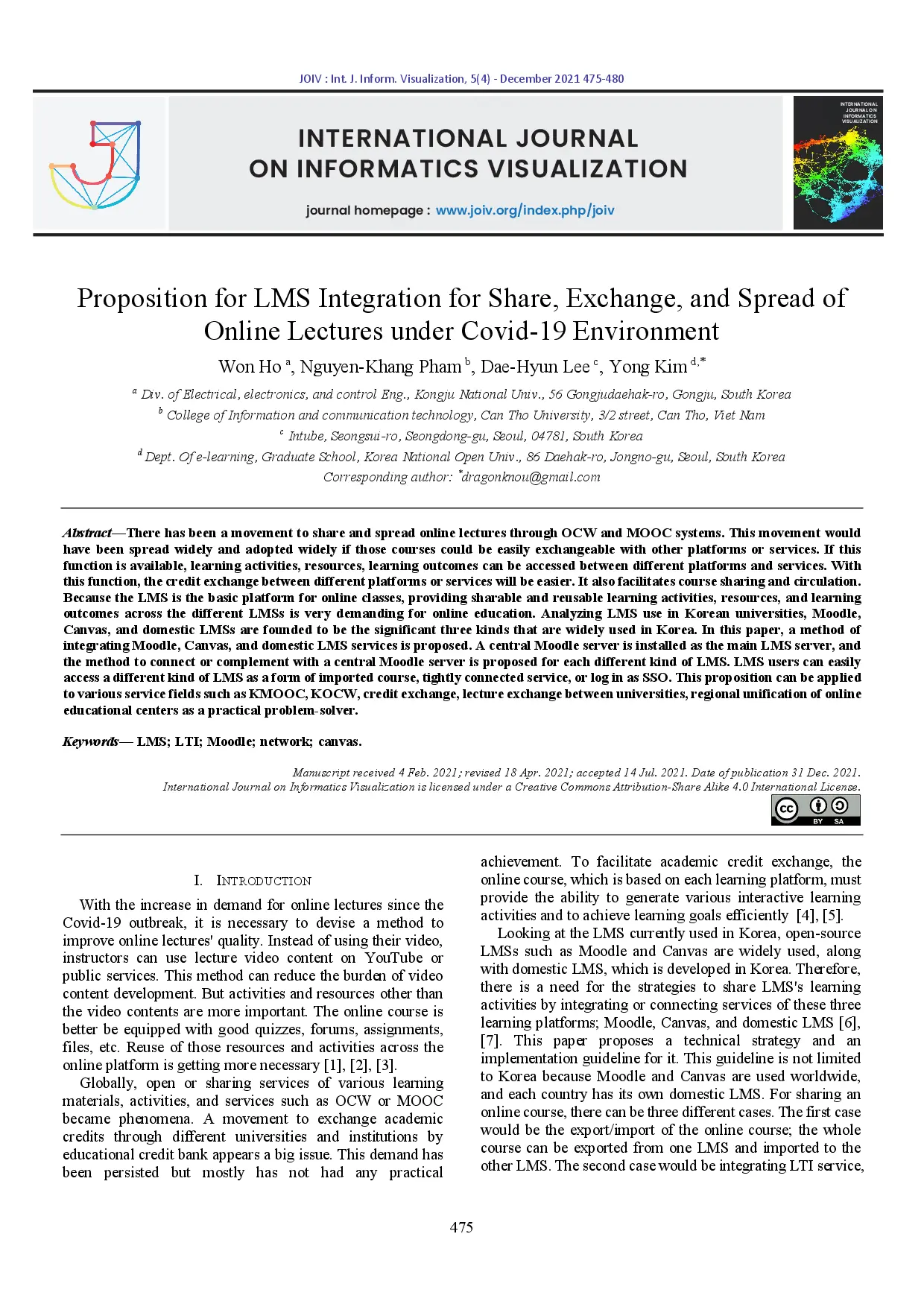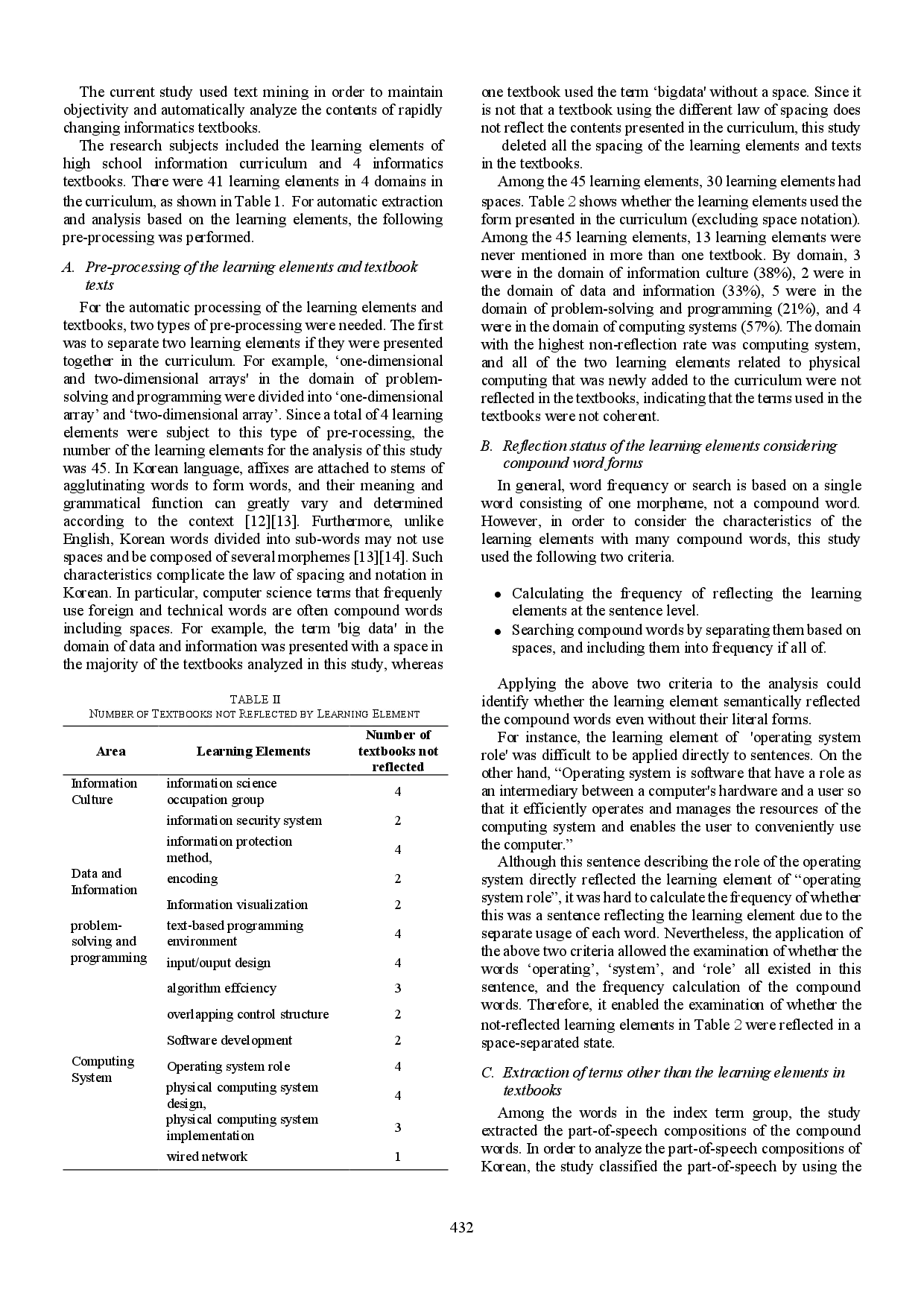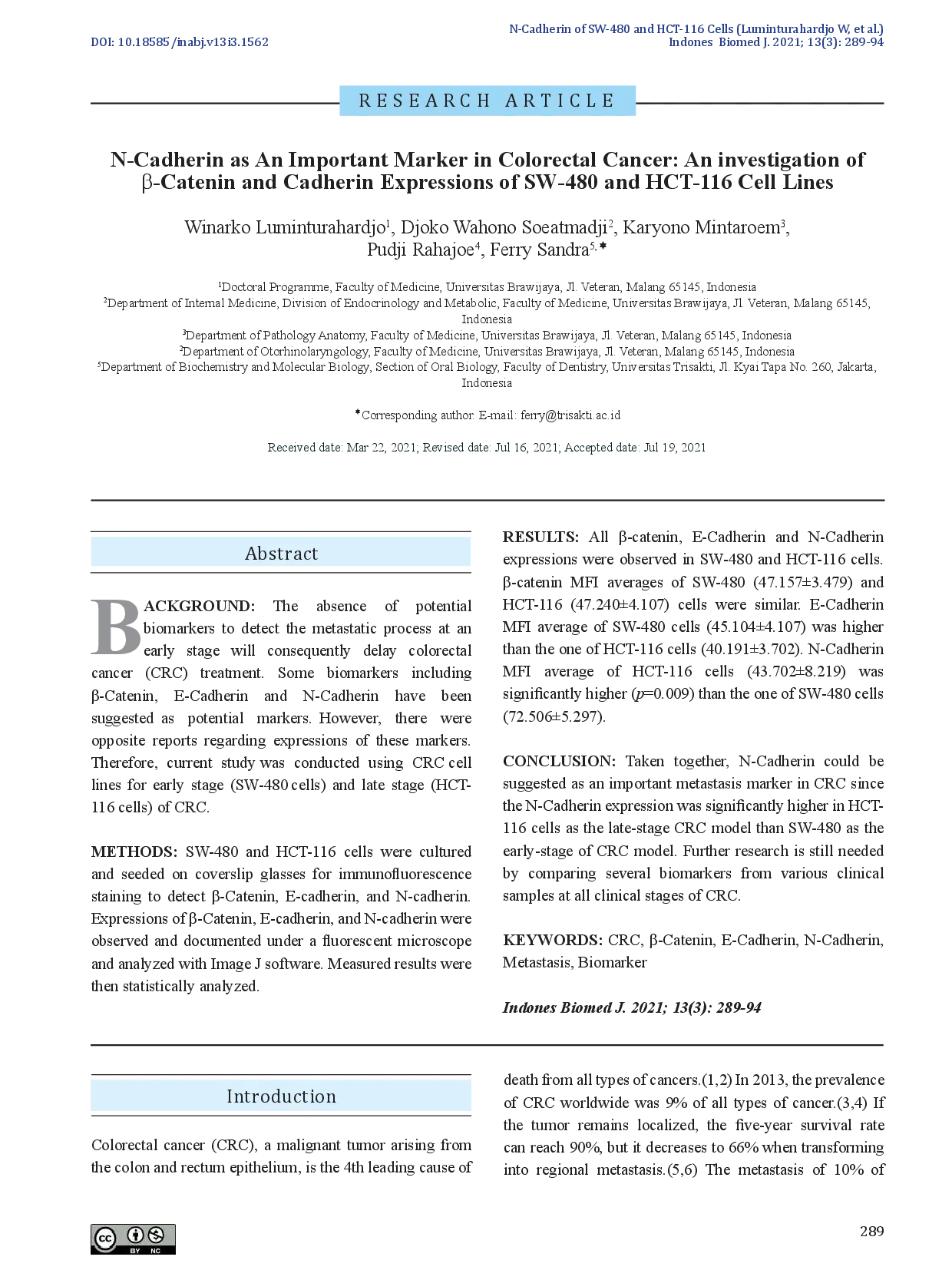JOIVJOIV
JOIV : International Journal on Informatics VisualizationJOIV : International Journal on Informatics VisualizationAn effective crop management practice is very important to the sustenance of crop production. With the emergence of Industrial Revolution 4.0 (IR 4.0), precision farming has become the key element in modern agriculture to help farmers in maintaining the sustainability of crop production. Unmanned aerial vehicle (UAV) also known as drone was widely used in agriculture as one of the potential technologies to collect the data and monitor the crop condition. Managing and monitoring the paddy field especially at the bigger scale is one of the biggest challenges for farmers. Traditionally, the paddy field and crop condition are only monitored and observed manually by the farmers which may sometimes lead to inaccurate observation of the plot due the large area. Therefore, this study proposes the application of unmanned aerial vehicles and RGB imagery for monitoring rice crop development and paddy field condition. The integration of UAV with RGB digital camera were used to collect the data in the paddy field. Result shows that the early monitoring of rice crops is important to identify the crop condition. Therefore, with the use of aerial imagery analysis from UAV, it can help to improve rice crop management and eventually is expected to increase rice crop production.
In conclusion, UAV and RGB imagery was successful in monitoring the rice plot condition at an early stage, enabling farmers to monitor both the crop and field conditions.The high spatial resolution imagery facilitated clear analysis of the paddy fields surface.This information is crucial for effective rice crop management and can serve as a reference for decision-making and future action planning to improve rice plant growth and development.The use of UAV provides a low-cost method for monitoring large areas and generating data for further analysis.
Further research could investigate the integration of UAV imagery with machine learning algorithms to automate the detection of plant stress and disease, allowing for more timely and targeted interventions. Additionally, studies could explore the use of different spectral bands beyond RGB, such as multispectral or hyperspectral imagery, to enhance the identification of subtle variations in crop health and nutrient deficiencies. Finally, research should focus on developing cost-effective and user-friendly data processing workflows to make UAV-based monitoring accessible to a wider range of farmers, particularly those with limited technical expertise, by creating a simplified interface and automated analysis tools. These advancements will contribute to more efficient and sustainable rice production practices, ultimately enhancing food security and improving the livelihoods of farmers.
| File size | 3.8 MB |
| Pages | 6 |
| DMCA | ReportReport |
Related /
OJS INDONESIAOJS INDONESIA This study employed a quantitative method and a quasi-experimental design, with a sample of 63 students divided into experimental and control groups. TheThis study employed a quantitative method and a quasi-experimental design, with a sample of 63 students divided into experimental and control groups. The
JOIVJOIV Hal ini memfasilitasi pertukaran kredit antar platform atau layanan yang berbeda. Ini juga memfasilitasi berbagi dan sirkulasi kursus. Karena LMS adalahHal ini memfasilitasi pertukaran kredit antar platform atau layanan yang berbeda. Ini juga memfasilitasi berbagi dan sirkulasi kursus. Karena LMS adalah
JOIVJOIV Metode yang dapat digunakan untuk memberikan rekomendasi bagi pengguna yang sama adalah collaborative filtering. Neural collaborative filtering biasanyaMetode yang dapat digunakan untuk memberikan rekomendasi bagi pengguna yang sama adalah collaborative filtering. Neural collaborative filtering biasanya
JOIVJOIV Analisis hubungan istilah mengungkap bahwa istilah teori umum dalam domain yang sama memiliki nilai confidence lebih tinggi, sedangkan istilah pada tingkatAnalisis hubungan istilah mengungkap bahwa istilah teori umum dalam domain yang sama memiliki nilai confidence lebih tinggi, sedangkan istilah pada tingkat
Useful /
UMMUMM Dengan mencontoh keberhasilan Malaysia dalam memperbaiki Indeks Persepsi Korupsi, penelitian ini menegaskan pentingnya penguatan integritas melalui internalisasiDengan mencontoh keberhasilan Malaysia dalam memperbaiki Indeks Persepsi Korupsi, penelitian ini menegaskan pentingnya penguatan integritas melalui internalisasi
INABJINABJ GA menunjukkan AUC rendah (0,646; p=0,287) untuk deteksi hiperglikemia, dengan sensitivitas 60% dan spesifisitas 60,4% pada cut-off 11,45%. Kesimpulan:GA menunjukkan AUC rendah (0,646; p=0,287) untuk deteksi hiperglikemia, dengan sensitivitas 60% dan spesifisitas 60,4% pada cut-off 11,45%. Kesimpulan:
INABJINABJ Ke depannya, diperlukan penelitian lebih lanjut untuk mengeksplorasi potensi penerapan LPA secara lebih luas dalam diagnosis dan pengelolaan tuberkulosisKe depannya, diperlukan penelitian lebih lanjut untuk mengeksplorasi potensi penerapan LPA secara lebih luas dalam diagnosis dan pengelolaan tuberkulosis
INABJINABJ Hasil penelitian menunjukkan bahwa ekspresi N-Cadherin pada sel HCT-116 (model CRC stadium lanjut) lebih tinggi daripada sel SW-480 (model CRC stadiumHasil penelitian menunjukkan bahwa ekspresi N-Cadherin pada sel HCT-116 (model CRC stadium lanjut) lebih tinggi daripada sel SW-480 (model CRC stadium







